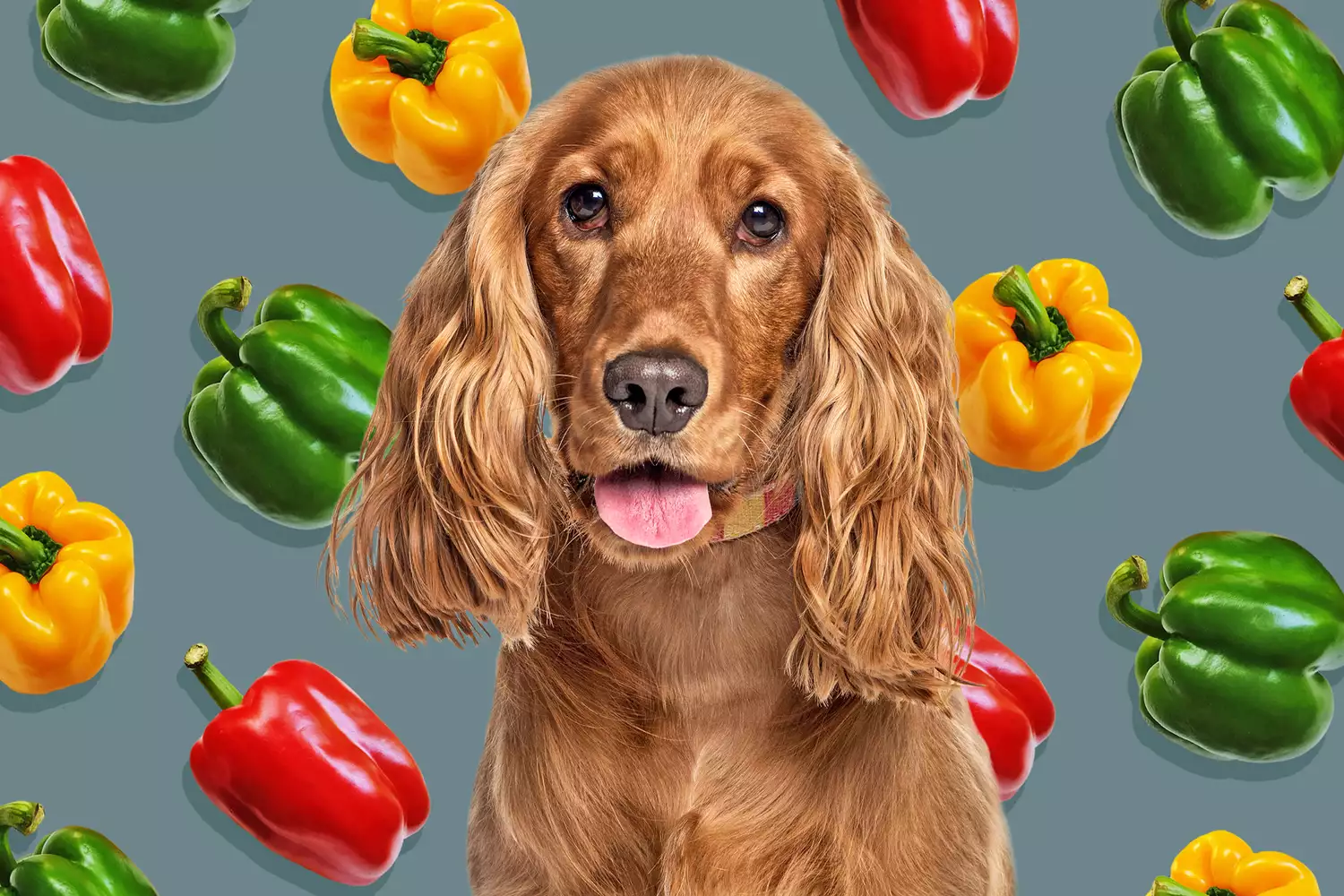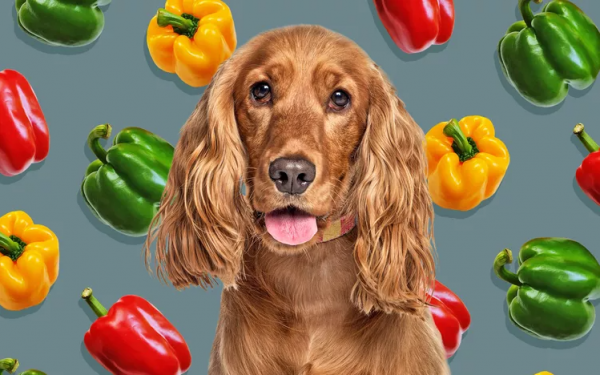The list of dog-friendly human foods is relatively lengthy, and while some are well-known, others aren’t. For instance, you know peanut butter (sans xylitol) and bananas are safe for pups, but what about bell peppers? Turns out, your dog can eat bell peppers—with a few caveats.
Is Bell Pepper Safe for Dogs?
The good news is that dogs can eat bell peppers, and it doesn’t matter the color. “All colors of bell peppers are safe for dogs to eat,” says Stephanie Sheen, DVM, of Fuzzy Pet Health, who’s based in Bend, Ore.
Just as bell peppers provide health benefits for people, they also have benefits for dogs. Start with fiber, which is a low-calorie way to increase feelings of fullness, Sheen says. Fiber can also help dogs who need to lose weight, as bell peppers can be a good alternative to high-fat, high-calorie treats. Fiber can even help keep dogs regular and aid their digestive health.
Plus, bell peppers come loaded with nutrients that benefit dogs. For starters, they contain beta-carotene, which is converted to the active form of vitamin A in the body, supporting eye health, Sheen says. The vitamin E in bell peppers helps with skin and coat health and fights inflammation while the vitamin C supports immune system function.

Does the Color of Bell Pepper Matter?
In terms of safety, dogs can have whatever color bell pepper you have on hand. Yet if you want to give your dog the healthiest option, you’ll veer toward red. “Red bell peppers are 11 times higher in the antioxidant beta-carotene than green bell peppers and contain higher levels of potassium, folate, and lutein,” Sheen says.
How Much Bell Pepper Can Dogs Eat?
Bell peppers might be low in calories, but they still need to be given in moderation. “As with any treat, you should limit them to 10 percent or less of your dog’s daily treat calories,” Sheen says. “When introducing any new food to your dog’s diet, including bell peppers, offer only a small amount to start to be sure your pet enjoys it and that it doesn’t cause them any digestive upset,” Sheen says.
Over time, you can work your way up to giving a quarter of a pepper to small dogs, up to half a pepper for large dogs daily, if they enjoy it and tolerate it well.
How to Safely Feed Bell Pepper to Your Dog
Before feeding your dog bell peppers, remove all stems and leaves. You can give your dog raw bell peppers, but cooking them may hold an advantage. “The skin can be tough for some dogs to chew through,” Sheen says. Steaming them is always a good option. Just avoid cooking them in fat or adding any seasoning, especially onions and garlic, which are toxic to dogs.
Make sure you cut them into small pieces. This applies not only to small dogs for whom larger pieces may become choking hazards but also large dogs who gobble treats without chewing them. To make bell peppers even safer, you can always puree the peppers and top your dog’s regular food with the puree.
However, know that while bell peppers are safe for your dog, hot peppers like chili and jalapeño aren’t. These peppers contain a molecule called capsaicin that makes them spicy, which can irritate a dog’s digestive tract and result in diarrhea and vomiting.



